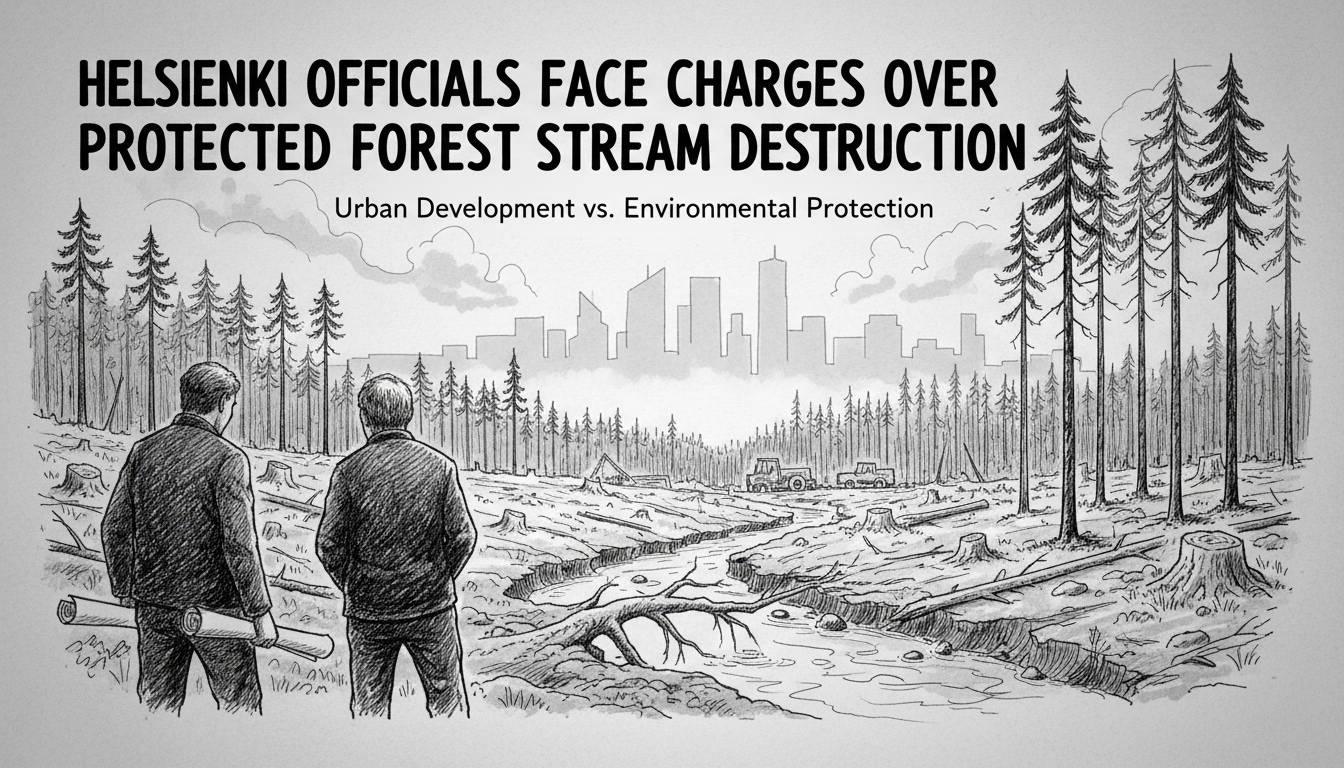Six Helsinki city officials face criminal charges for damaging a protected stream during logging operations. The incident occurred in Stansvik forest in Laajasalo during the third quarter of last year. This case highlights growing tensions between urban development and environmental protection in Finland's capital region.
The stream in question is a 'noro' - a seasonal watercourse unique to Finnish landscapes. These intermittent streams flow during wet periods but dry up regularly, typically in midsummer. Despite their temporary nature, they play crucial ecological roles that Finnish law specifically protects.
Mari Annala, a special planner at the Finnish Environment Institute, explains why these waterways matter. 'Noro streams serve as headwaters for larger brooks and rivers. If we want to maintain good water quality in major water systems, we must protect these source waters,' she states.
The biodiversity supported by these small waterways is remarkable. They host specialized species not found elsewhere, including larvae of many water insects and stoneflies. The surrounding vegetation features diverse moss species like stream feather moss and sickle-leaved fen moss.
What makes this case particularly noteworthy is the court's treatment of activists who defended the stream. Earlier, a district court acquitted protesters who blocked logging equipment, ruling they acted under necessity while protecting a waterway protected by Finland's Water Act. The court determined that resisting police was justified and necessary in this circumstance.
The legal distinction between different waterway types carries real consequences in Finland. While similar to permanent streams, noro streams receive specific protection under both water and forest legislation. Damaging their natural state is prohibited everywhere except Lapland.
Urban development pressure continues to threaten these sensitive ecosystems. The construction of Kruunuvuorenrannan residential area has partially destroyed the stream channel in Stansvik. Much of the watershed now lies beneath construction sites.
Annala notes the broader context of loss. 'Much has disappeared due to forestry, agriculture and urban construction. We have very few natural noro streams remaining in southern Finland,' she says.
This case represents a test of Finland's environmental enforcement mechanisms. As cities expand, conflicts between development and conservation are increasing. The outcome could set important precedents for how Finland balances growth with environmental protection.
The charges against city officials suggest authorities are taking waterway protection seriously. Yet the ongoing destruction highlights implementation challenges. Finland prides itself on environmental stewardship, but cases like this reveal gaps between policy and practice.
International readers might find parallels with wetland protection debates in their own countries. The fundamental tension between development and conservation transcends borders. What makes Finland's approach distinctive is the specific legal protection for these seasonal waterways and the criminal charges against public officials.
The case continues through Finland's legal system, with potential implications for future urban development projects across the Nordic region.
